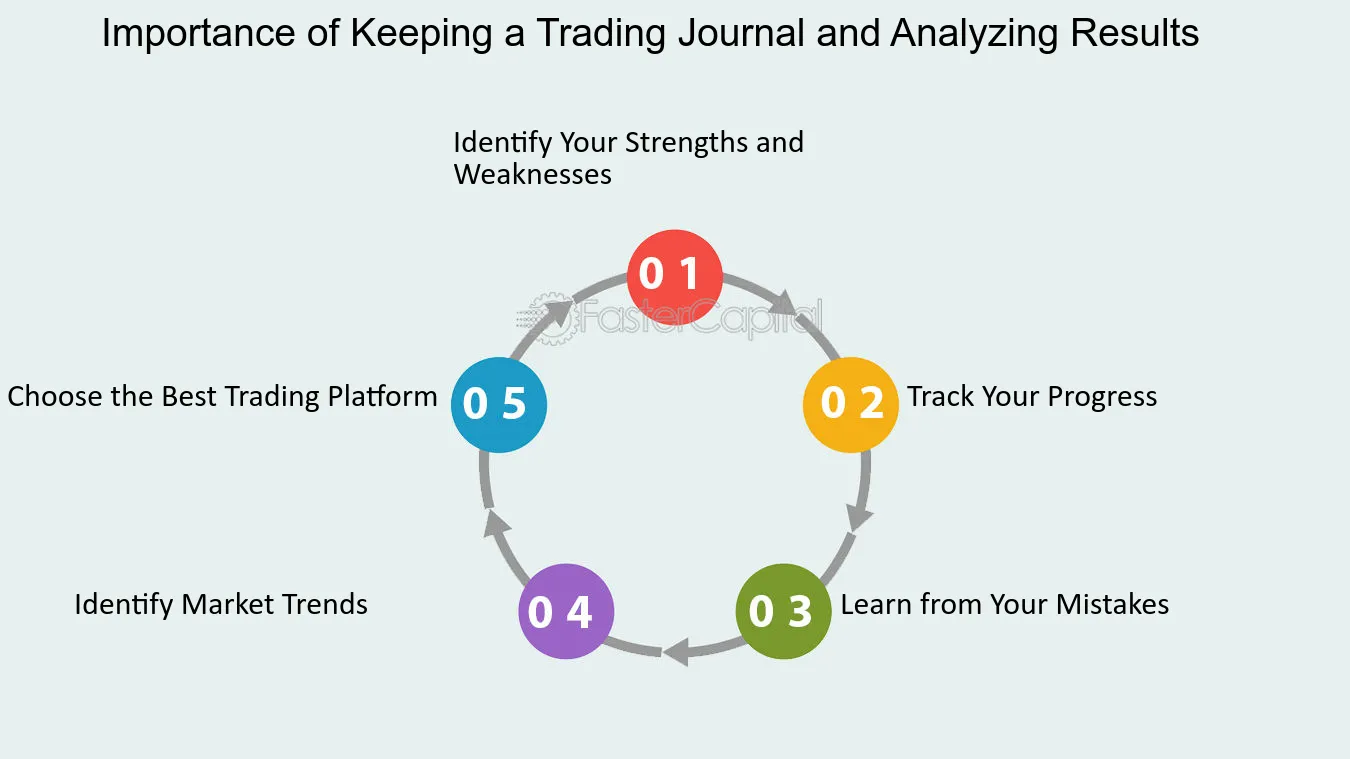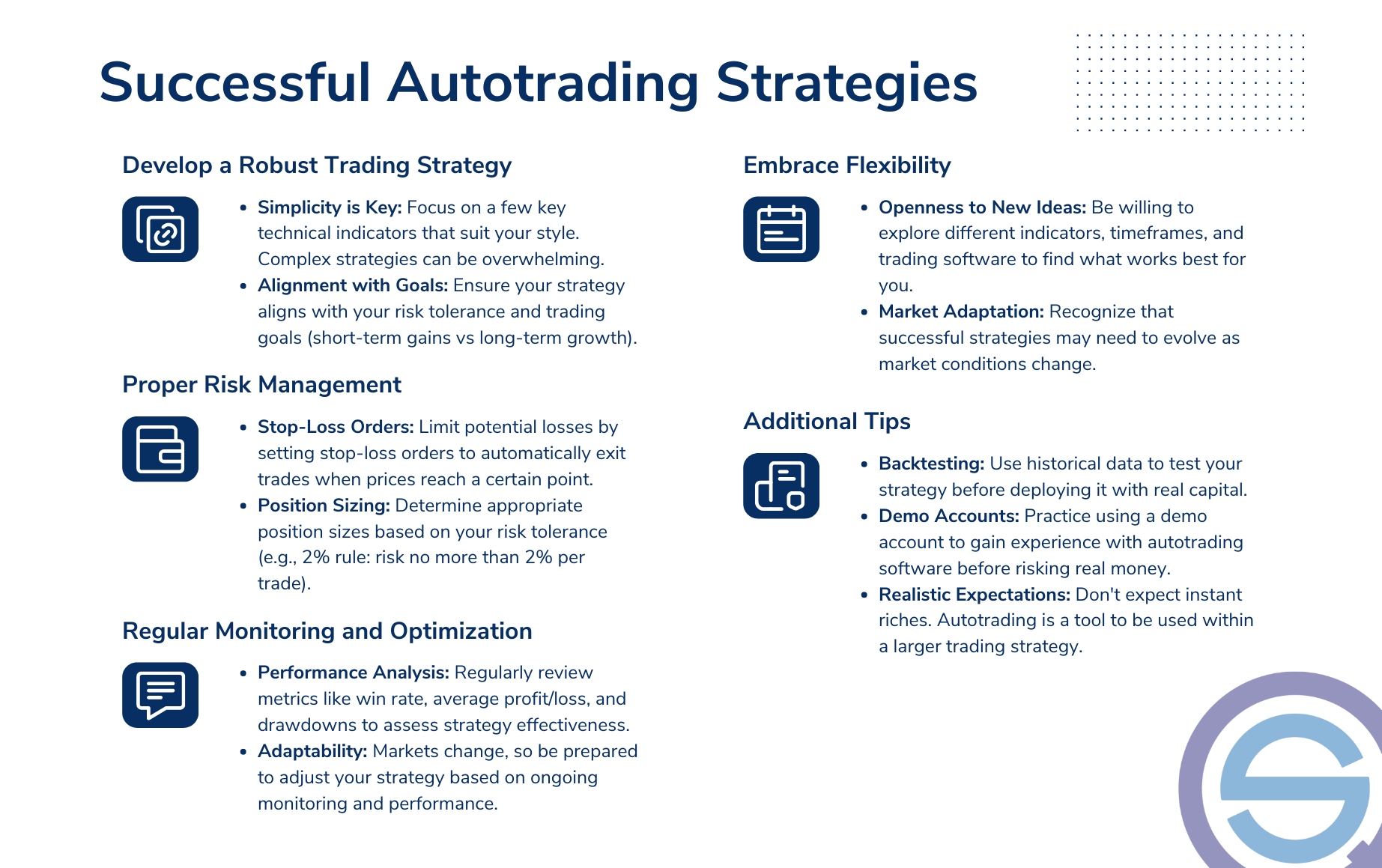Did you know that the average day trader spends more time analyzing their performance than some people spend watching their favorite reality TV show? Understanding how to effectively analyze day trading performance is crucial for success in this fast-paced world. This article breaks down key metrics for performance analysis, offers insights on tracking gains and losses, and highlights essential tools for evaluating trading results. We delve into calculating win rates, the impact of risk management, and the importance of maintaining a trading journal. Additionally, you'll learn about emotional factors, common pitfalls, and how historical data can enhance your strategies. Finally, we emphasize the significance of benchmarking and best practices for performance review. With the support of DayTradingBusiness, you’ll be equipped to sharpen your skills and boost your trading effectiveness.
What are the key metrics for analyzing day trading performance?
Key metrics for analyzing day trading performance include:
1. Win Rate: The percentage of profitable trades out of total trades taken.
2. Risk-Reward Ratio: The average profit of winning trades compared to the average loss of losing trades.
3. Average Gain per Trade: The average profit made on winning trades.
4. Average Loss per Trade: The average loss incurred on losing trades.
5. Maximum Drawdown: The largest peak-to-trough decline in your trading account balance.
6. Sharpe Ratio: A measure of risk-adjusted return, indicating how much excess return you receive for the volatility of your investment.
7. Trade Frequency: The number of trades executed within a specific period.
8. Commission Costs: Total costs incurred from trading fees that can impact overall profitability.
Tracking these metrics will provide insights into trading effectiveness and areas for improvement.
How can I track my day trading gains and losses effectively?
To track your day trading gains and losses effectively, use a trading journal. Record each trade with details like entry and exit points, position size, and rationale. Use spreadsheets or trading software to automate calculations of profits and losses. Regularly review your performance metrics, such as win rate and average gain/loss per trade. Set up alerts for significant price changes to help manage trades in real-time. Consider using apps that integrate with your brokerage for seamless tracking. Consistent analysis will help you refine your strategies and improve results.
What tools can help me analyze my day trading results?
To analyze your day trading results, consider these tools:
1. Trading Journals: Use tools like Edgewonk or Tradervue to log trades, track performance, and identify patterns.
2. Performance Analytics Software: Platforms like Trade Analyzer or My Trade Book provide detailed statistics and visualizations of your trading history.
3. Spreadsheet Software: Create custom spreadsheets in Excel or Google Sheets to track trades, calculate metrics, and visualize performance trends.
4. Backtesting Software: Tools like TradingView or NinjaTrader allow you to test strategies against historical data to see how they would have performed.
5. Risk Management Tools: Use tools like MyTradeRisk to assess risk exposure and improve your position sizing.
These tools will help you gain insights into your trading performance and refine your strategies.
How do I calculate my win rate in day trading?
To calculate your win rate in day trading, divide the number of winning trades by the total number of trades taken. Then, multiply the result by 100 to get a percentage. For example, if you made 50 trades and 30 were winners, your win rate would be (30/50) x 100 = 60%.
What role does risk management play in day trading analysis?
Risk management is crucial in day trading analysis as it helps traders protect their capital and ensure longevity in the market. By setting stop-loss orders, traders can limit potential losses on each trade. Position sizing strategies determine how much capital to allocate to each trade, balancing risk and reward. Monitoring risk-reward ratios allows traders to evaluate if potential gains justify the risks taken. Effective risk management enhances decision-making, enabling traders to stay disciplined and focused, ultimately improving overall performance.
How can I evaluate my trading strategies for effectiveness?
To evaluate your trading strategies for effectiveness, follow these steps:
1. Track Your Trades: Record every trade, including entry and exit points, position size, and reasons for the trade.
2. Analyze Performance: Calculate key metrics like win rate, average gain/loss per trade, and profit factor.
3. Review Periodically: Set aside time weekly or monthly to assess your trades. Identify patterns in winning and losing trades.
4. Use a Trading Journal: Document your thoughts and emotions during trades to understand psychological impacts on performance.
5. Backtesting: Test strategies using historical data to see how they would have performed in past market conditions.
6. Risk Management Evaluation: Assess your risk-reward ratio and ensure it aligns with your trading goals.
7. Seek Feedback: Discuss your strategies with other traders or mentors for additional insights.
Implement these steps regularly to refine and improve your day trading performance.
What is the importance of keeping a trading journal?

Keeping a trading journal is crucial for analyzing day trading performance. It allows you to track your trades, decisions, and emotions, helping identify patterns in your strategy. This reflection aids in recognizing both strengths and weaknesses, enabling you to refine your approach. Regularly reviewing your journal can improve discipline and emotional control, leading to better trading outcomes. Ultimately, a trading journal is a powerful tool for continuous improvement in your trading journey.
How do emotional factors impact day trading performance?
Emotional factors significantly impact day trading performance by influencing decision-making, risk tolerance, and discipline. Fear can lead to missed opportunities or premature exits, while greed may cause overtrading or holding onto losing positions. Emotional stress can cloud judgment, resulting in impulsive trades. Maintaining emotional control enhances focus and strategic thinking, leading to better analysis and execution of trades. Traders who recognize and manage their emotions tend to perform more consistently and effectively.
What common mistakes should I avoid in day trading analysis?
Avoid these common mistakes in day trading analysis:
1. Ignoring Risk Management: Set stop-loss orders to protect your capital.
2. Overtrading: Don’t force trades; wait for clear opportunities.
3. Neglecting a Trading Plan: Stick to a well-defined strategy instead of trading on impulse.
4. Chasing Losses: Resist the urge to recover losses quickly; it often leads to more mistakes.
5. Failing to Analyze Past Trades: Review your trades regularly to identify patterns and improve.
6. Being Influenced by Emotions: Keep emotions in check; stick to your strategy regardless of market fluctuations.
7. Not Staying Informed: Stay updated on market news and trends that can impact your trades.
How can I use historical data to improve my day trading?

To improve your day trading using historical data, start by analyzing past trades to identify patterns in your winning and losing trades. Look for common factors such as entry and exit points, time of day, and market conditions. Use this data to refine your trading strategy, focusing on what has worked well in the past. Backtest your strategy with historical data to gauge its effectiveness before applying it in real-time. Additionally, track key performance metrics like win rate, average profit per trade, and maximum drawdown to assess your overall trading performance. Adjust your approach based on this analysis to enhance your decision-making and increase profitability.
What benchmarks should I compare my performance against?
Compare your day trading performance against these benchmarks:
1. Market Indices: Use major indices like the S&P 500 or NASDAQ to gauge overall market performance.
2. Personal Goals: Set specific profit targets or return percentages to measure against your own objectives.
3. Peer Performance: Analyze results from fellow traders or trading groups to see how you stack up.
4. Risk-Adjusted Returns: Look at metrics like Sharpe Ratio or Sortino Ratio to assess returns relative to risk taken.
5. Win Rate and Average Gain/Loss: Track your win percentage and the average profit or loss per trade.
6. Drawdown: Monitor your maximum drawdown to understand risk management effectiveness.
7. Trading Strategy Benchmarks: If you follow a specific strategy, compare it to its historical performance or published results.
Use these benchmarks to get a clear picture of your trading success and areas for improvement.
How do commissions and fees affect day trading results?
Commissions and fees directly impact day trading results by reducing overall profits. Every trade incurs costs, which can add up quickly, especially with frequent buying and selling. High commissions eat into gains, making it harder to achieve profitable trades.
For example, if you make a profit of $100 but pay $10 in commissions, your net gain is only $90. This is crucial when considering strategies with tight margins. Therefore, selecting a brokerage with lower fees can significantly improve your performance. Tracking these costs in your trading journal helps assess their effect on your overall results.
What are the best practices for reviewing my trading performance?

1. Keep a Trading Journal: Record every trade, including entry and exit points, reasons for the trade, and outcomes.
2. Analyze Win/Loss Ratio: Calculate the percentage of winning trades versus losing trades to assess overall effectiveness.
3. Review Trade Duration: Look at how long you held positions to determine if your timing aligns with your strategy.
4. Assess Risk Management: Evaluate your risk-to-reward ratio to ensure you’re not risking too much on each trade.
5. Identify Patterns: Look for recurring mistakes or successful strategies to refine your trading plan.
6. Set Performance Metrics: Establish clear benchmarks (e.g., monthly profit targets) to evaluate progress.
7. Use Performance Software: Leverage trading analytics tools to gain insights into your performance.
8. Seek Peer Feedback: Share your results with other traders for external perspective and tips for improvement.
How can I identify patterns in my trading behavior?
To identify patterns in your trading behavior, start by keeping a detailed trading journal. Record every trade, including entry and exit points, reasons for trades, and emotions during the process. Analyze this data regularly to spot consistent behaviors, such as recurring mistakes or successful strategies. Use performance metrics like win rate, average profit/loss, and risk-reward ratios to quantify your results. Consider visual aids like charts to track trends over time. Lastly, review your trades weekly or monthly to refine your strategies and improve decision-making.
Learn about How to Identify Reversal Patterns in Day Trading
How often should I analyze my day trading performance?
You should analyze your day trading performance daily. This allows you to identify patterns, assess your strategies, and make timely adjustments. Weekly reviews can also be beneficial for deeper insights into trends and long-term performance.
Learn about How to Analyze Futures Markets for Day Trading
## How Can I Effectively Analyze My Day Trading Performance?
Day trading is the practice of buying and selling financial instruments within the same trading day to capitalize on short-term price movements. To analyze day trading performance, track metrics such as win rate, average profit/loss per trade, and return on investment (ROI). Additionally, reviewing trade logs for patterns and maintaining a risk-reward ratio helps assess effectiveness.
Learn more about: What is Day Trading?
Learn about How to Analyze Futures Markets for Day Trading
What are the benefits of using a performance tracking software?
Using performance tracking software for day trading offers several benefits:
1. Data Analysis: It provides detailed insights into your trades, allowing you to analyze win rates, average profits, and losses.
2. Performance Metrics: You can track critical metrics like risk-to-reward ratios and trade duration, helping refine your strategy.
3. Time Efficiency: Automates data collection and analysis, saving you time and reducing the chance of human error.
4. Goal Setting: Helps set and monitor trading goals and benchmarks for continuous improvement.
5. Emotional Awareness: By reviewing your performance, you can identify emotional trading patterns and adjust accordingly.
6. Strategy Optimization: Facilitates backtesting of trading strategies to determine what works best for your style.
Using this software enhances your ability to make informed trading decisions and improve overall performance.
Conclusion about How to Analyze Day Trading Performance
In conclusion, effectively analyzing day trading performance is crucial for long-term success. By focusing on key metrics, tracking gains and losses, and utilizing the right tools, traders can gain valuable insights into their strategies. Incorporating risk management and keeping a detailed trading journal enhances evaluation and adjustment of methods. Emotional awareness and avoiding common pitfalls further refine performance analysis. Regularly reviewing results and benchmarking against historical data can lead to improved decision-making. For comprehensive support and resources, DayTradingBusiness offers valuable insights that can elevate your trading journey.
Learn about How to Analyze Futures Markets for Day Trading